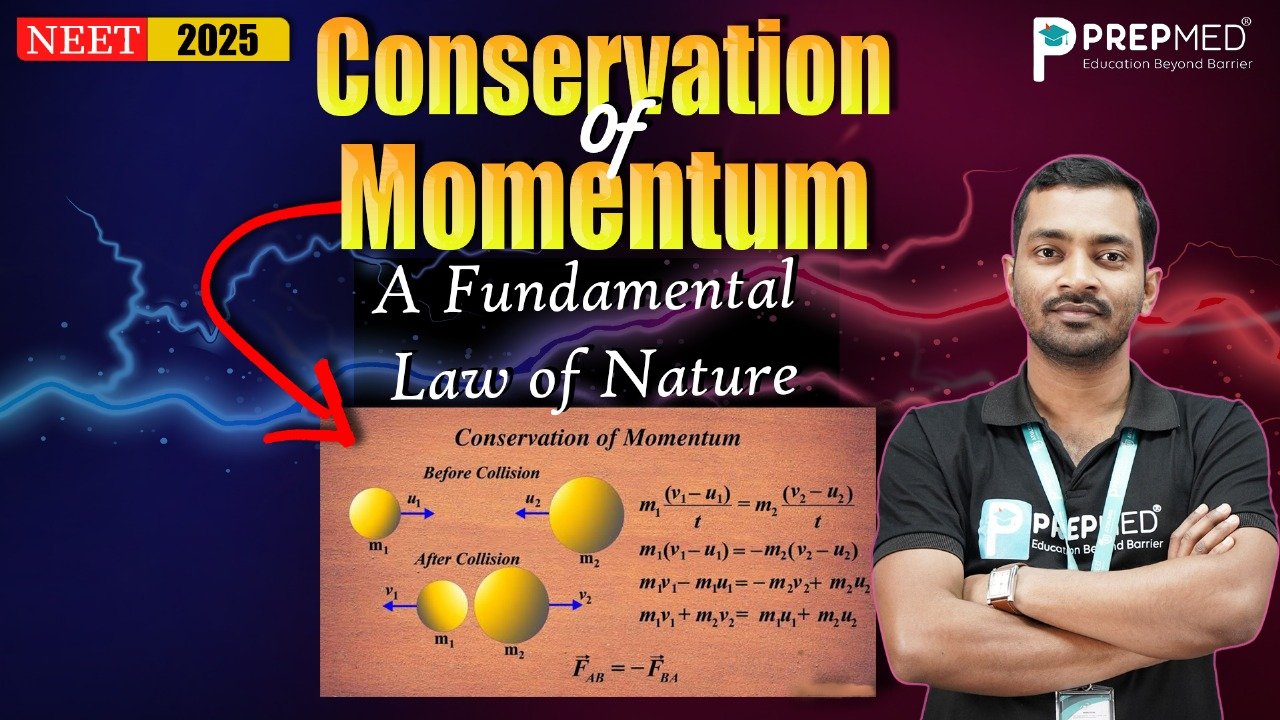March 30, 2025
Conservation of Momentum: A Fundamental Law of Nature
Conservation of momentum is a fundamental concept in physics that plays a critical role in understanding the motion of objects.The result from multiplying an object's mass with its velocity defines momentum. Momentum expresses the quantity of motion found within objects by multiplying their mass by their velocity. Classical mechanics relies heavily on the fundamental principle of conservation of momentum which states that in a closed system, the total momentum of a system is conserved if no external forces are acting on it.
The law of conservation of momentum is often expressed mathematically as:
m1u1+m2u2=m1v1+m2v2
Where:
- m1 and m2 represent the masses of the two objects.
- u1 and u2 are the initial velocities of the objects..
- v1 and v2 are the final velocities of the objects..
The conservation of momentum is true not only for elastic but also for non inelastic collisions. During elastic collisions two objects collide before they split apart while preserving both momentum and kinetic energy. Momentum remains constant in inelastic collisions but a part of kinetic energy transforms into heat or sound energy.
Conservation law of Momentum
The Conservation law of Momentum is a fundamental law in physics that states the total momentum of a closed system remains constant if no external forces are acting on the system. This principle plays a vital role in understanding the motion and interactions of objects.
Definition of Momentum
Momentum (p) is the product of the mass of an object and its velocity.It is represented by:
p=mv
Where:
- m is the mass of the object,
- v is the velocity.
Conservation of Angular Momentum
Angular momentum is a fundamental concept in physics, closely related to linear momentum but dealing with rotational motion. The conservation of angular momentum is a key principle that states that if no external torque acts on a system, the total angular momentum of the system remains constant over time. This principle is essential in understanding rotational dynamics and applies to a wide variety of phenomena, from the rotation of planets to the spinning of ice skaters.
What is Angular Momentum?
For a point mass m moving at a velocity v and at a distance rrr from a fixed axis of rotation, the angular momentum is given by:
L=r×p=r×mv
Where:
- L is the angular momentum,
- r is the position vector from the axis of rotation to the point mass,
- p=mv is the linear momentum of the object,
- The symbol × indicates the cross product between the position and momentum vectors
Conservation of Linear Momentum
The conservation of linear momentum is a fundamental principle in physics that states that the total linear momentum of a closed system remains constant if no external forces act upon it. This principle is crucial in understanding the motion of objects and is foundational in the study of mechanics.
What is Linear Momentum?
Linear momentum (p) is the product of an object's mass and its velocity:
p=mv
Where:
- p is the linear momentum,
- m is the mass of the object,
- v is the velocity of the object.
Linear momentum is a vector quantity, which means it not only has magnitude but also direction. The momentum of an object represents the quantity of motion the object has and is directly proportional to both its mass and its velocity.
Let’s have a look at one of the most important question for NEET 2025
Question:
A bullet of mass m travelling with a speed v hits a block of mass M initially at rest and gets embedded in it. The combined system is free to move and there is no other force acting on the system. The heat generated in the process will be:
- Zero
- mv2/2
- Mmv2/2(M-m)
- mMv2/2(M+m)
Correct answer is: Option D
Conclusion
The conservation of angular momentum is a vital principle in understanding rotational motion. It explains a variety of phenomena, from the behavior of planets and satellites to the spinning motions of ice skaters and gyroscopes. By ensuring that angular momentum remains constant in the absence of external torque, we can predict how objects will rotate and interact in space. Whether in the vastness of space or the small scale of everyday experiences, the conservation of angular momentum remains a powerful tool for analyzing the dynamics of rotational motion.
Frequently Asked Questions (FAQs)
- State the difference between angular momentum and linear momentum
Linear momentum relates to the motion of objects moving in a straight line and is the product of mass and velocity. Angular momentum relates to rotational motion and is the product of the moment of inertia and angular velocity.
2. Does the conservation of angular momentum apply in the presence of external forces?
No, the conservation of angular momentum applies only when no external torque acts on the system. If an external torque is applied, the total angular momentum can change.
3. Why does an ice skater spin faster when pulling their arms in?
The moment of inertia decreases when an ice skater pulls their arms in. To conserve angular momentum, their rotational speed (angular velocity) increases, causing them to spin faster.







